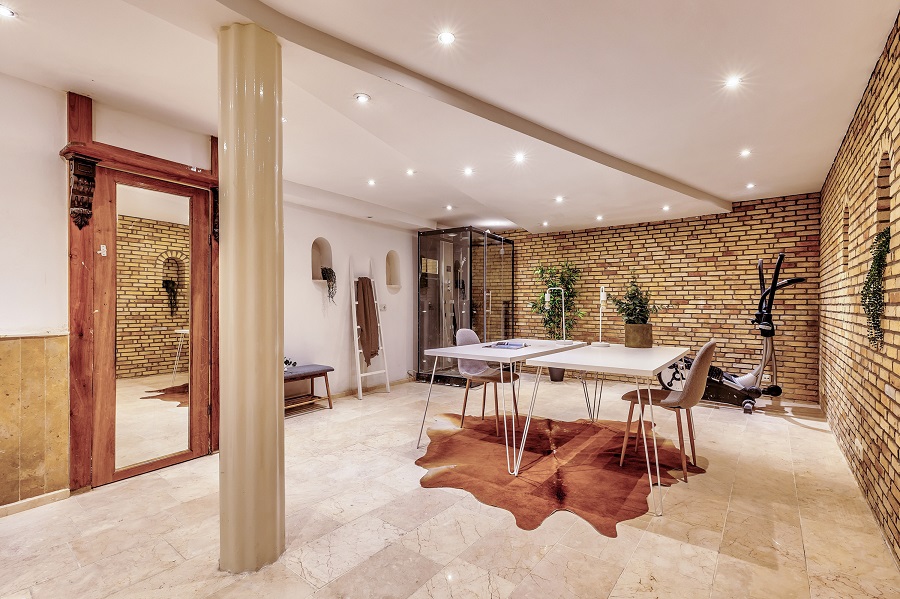Actually, the question is: when does a basement count as living space? There are some ground rules that are important for this. But first, this:
What is the difference between a basement and a basement?
There is a basement if more than half of that floor is below street level (‘ground level’). So suppose the height of the basement is 2 meters high. If the basement is 101 cm or more deeper than the street level, then it is a basement. A basement is said to exist if more than half of the height of that floor is above street level. So if that first floor is 200 cm high and of that 99 cm or less is below street level, then it is a basement.
But when is a basement or cellar living space?
Rule 1: Must be structurally suitable as living space.
A basement or cellar must be structurally suitable as living space. There should be good ventilation, heating and enough finishing to use that as a pleasant living space. A cold unfinished concrete floor and moisture makes it not structurally suitable as a living area. Also, for example, if a basement is really intended and built as a bicycle storage or installation space (with WTW system, heat pump, etc.), then the term “living area” does not apply.
‘Old building’ basements (of traditionally built houses) will always be damp. Groundwater will always press against the walls even if those walls are treated with special moisture-resistant plaster. If there is no very good ventilation there to keep the moisture out, then there cannot be official living space there. In newly constructed basements this problem with moisture should not occur.
Rule 2: Minimum 2 meters high
The space must be at least 2 meters high without the need to chop or break. If you are in an architecturally suitable basement/cave, then you should measure at least 2 meters in height with a measuring device. So you measure on the applied finish floor(carpet, laminate, or the like) to the ceiling.
Rule 3: The building code doesn’t matter here
The building code proposes a minimum mandatory rooflight access. However, this is not relevant when it comes to being allowed to count living area in the case of basements/souterrains. If there is no daylight (window) in a basement / cellar, then the space (provided the other rules are met) may just count as living area. The requirement for the presence and size of daylighting, by the way, does apply to attics.
Game rule 4: Look between the bars
If a basement or cellar has beams on the ceiling, then you should measure the height from the floor to the bottom of the beams. The only exception you may make to this is if the beams are so far apart that if you were to put partition walls under each beam, it would create decent rooms.
Game rule 5: Houses consisting only of a basement that is too low are tolerated
Some homes consist only of a basement where the minimum height of 2 meters is not met (for example, in Amsterdam). If this dwelling is reasonably habitable, then the area of this basement dwelling may exceptionally count as living area. But please note: if the house does not consist entirely of this basement, this tolerance rule does not apply.
Commercial questions
If you have a house or apartment with a basement or cellar and want to know what this does to the value, we have worked out a few more questions for you:
Does the amount of daylight matter for how much a basement would fetch when sold?
Yes in principle. The more daylight access, the nicer this space is to use as living space and the more qualitative the quality of living space in a house is, the more it is worth.
Does the amount of daylight matter for how much a basement would fetch when sold?
Yes in principle. Because again, the more daylight the nicer this space is to use as living space. So if a space is more pleasant to use as living space because of this better quality, the more it is worth. So you could say that a basement (where a larger portion of that building layer is above ground) adds more value than a basement (where more than half of that building layer is below ground). Of course, this assumes that both spaces are equivalent in quality on the inside.
Can a well-finished basement/cave yield more per square foot than a square foot that is completely above ground?
Yes it does if the spaces are in other locations. A dark basement in Amsterdam Centre will of course be able to yield much per square meter than a square meter of normal living space in Almere. It could also be that something does lie on the same street and a basement/sub-basement is worth more than a normal residential meter at the neighbor’s house. Think of a newly built house in Castricum with a basement that is completely finished in accordance with the latest requirements of the building regulations and according to the latest modern wishes with expensive details and the highest attainable level of sustainability. It will score better in value than a house a little further down the road built in the 1960s with infamous Kwaaitaal floors (floors known to contain concrete rot), a much lower level of finishing and preservation that lags behind today’s requirements.
If you want more information on how to determine the living area of your home, read this blog.

